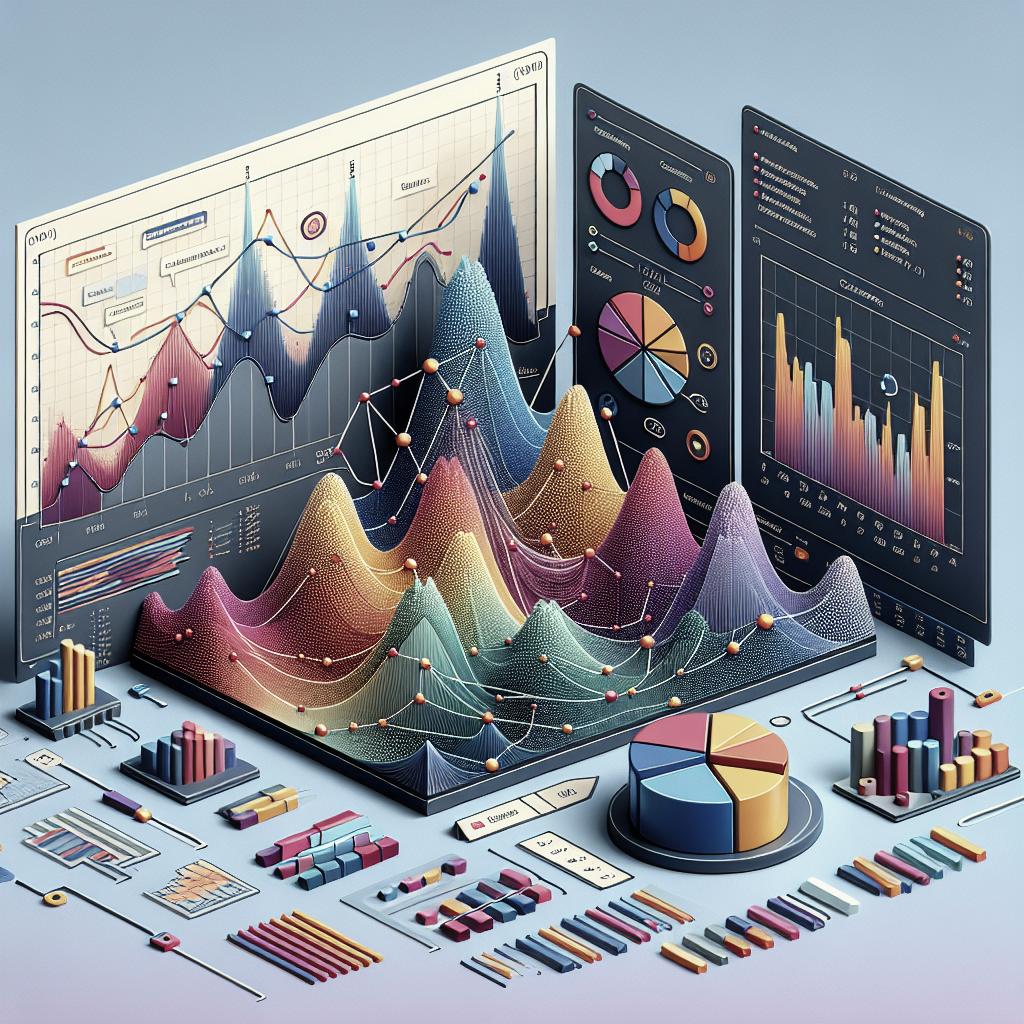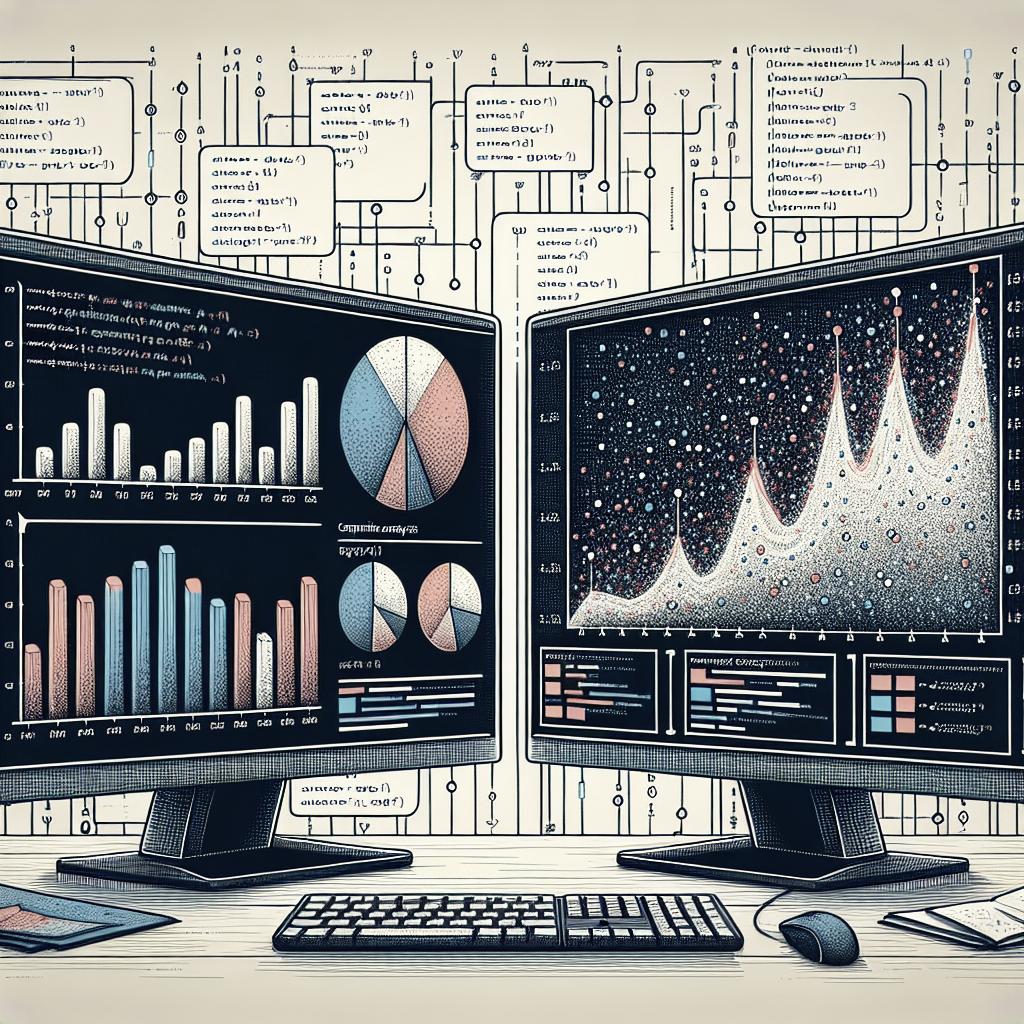Mastering ggplot2 Customization Options
ggplot2 is a powerful and versatile R package for creating visually appealing data visualizations. Whether you are an analyst, a data scientist, or a researcher, personalizing your plots is crucial for delivering accurate and informative insights. This comprehensive guide covers various customization options of ggplot2, like setting titles, scaling axes, modifying legends, and enriching your visualization with themes and annotations. We’ll delve into practical examples with step-by-step instructions, so gear up to transform your visualizations with these dynamic features.
Prerequisites
Before diving into the customization options, ensure you have the ggplot2 package installed and loaded in your R environment. You should also be familiar with R’s basic syntax and be comfortable handling data frames. Understanding basic plotting concepts is beneficial, helping you to make the most of the advanced customizations discussed below.
Make sure your dataset is clean and structured, as ggplot2 performs best with tidy data that follows the principles of ‘tidy’ data layout. Familiarity with RStudio or other coding environments is a plus, as they enhance your ggplot2 experience with features like syntax highlighting and ease of execution.
Titles and Axis Labels
Titles and axis labels are essential for enhancing the readability and interpretability of your plots. The
labs()
function in ggplot2 lets you add descriptive titles and subtitles. For example, you can add a main title with
labs(title = "Your Title Here")
.
Similarly, axis labels are crucial for defining what the axes represent. Utilize the same
labs()
function to specify axis labels, such as
labs(x = "X Axis Label", y = "Y Axis Label")
. This consistency aids viewers in comprehending the context of your data.
Axes: Limits, Ticks and Log
Axis Limits and Scales
Setting axis limits allows you to focus on specific areas of your data. Use
xlim()
and
ylim()
to define the lower and upper limits of the x and y axes respectively. This function hides data outside the specified range, ensuring a clearer visualization.
For dynamic scaling, the
scale_x_continuous()
and
scale_y_continuous()
functions provide additional control over how data is presented. They come with multiple arguments to customize breaks, labels, and trans transformations for enhanced flexibility.
Log Scale
Large datasets often benefit from the use of log scales to manage and visualize data distribution effectively. Apply
scale_x_log10()
or
scale_y_log10()
to transform the scales, allowing you to handle outliers and data skewness without removing valuable information.
Log scales are particularly helpful for datasets with exponential growth patterns, offering a balanced and revealing perspective of underlying trends and patterns.
Axis Ticks: Set and Rotate Text Labels
Ticks provide a structured view of your plot, and their placement affects readability. Control ticks using the
breaks
argument in the
scale_x_*
and
scale_y_*
functions. Define specific positions to tailor the tick marks to your content.
Rotating text labels enhances clarity when dealing with overlapping text. Use the
theme(axis.text.x = element_text(angle = 90))
command to rotate labels, making them easier to read without compromising the plot’s aesthetics.
Legends: Title, Position and Appearance
Change Legend Title and Position
Legends offer explanations for elements in your plot and are key to interpretation. The
guides()
function allows you to set or alter the legend title via
guides(fill = guide_legend(title = "New Title"))
. A supportive title directs viewers expertly.
When considering the legend-position, the
theme()
function, with the argument
legend.position
, provides options like “top,” “bottom,” “left,” “right,” or even a custom coordinate. An optimum position avoids clutter and enhances visual appeal.
Change the Appearance of Legends
Legend appearance can be customized to suit different styles via
scale_fill_manual()
or
scale_color_manual()
, which let you specify color palettes and guide aesthetics. Choose colors that maintain high contrast and improve accessibility.
Furthermore, use the
theme()
function to tweak text size and style, ensuring harmony with the rest of the visualization for cohesiveness and clarity.
Rename Legend Labels and Change the Order of Items
Present data effectively by renaming legend labels to reflect familiar terms. Use
scale_fill_discrete(labels = c("Label1", "Label2"))
to set specific labels and guide viewers through your plot.
Customizing the item order further aids in enhancing interpretation. The
guide_legend(order)
parameter allows rearranging of legend items according to preference or significance.
Themes Gallery
Use Themes in ggplot2 Package
Themes are predefined aesthetics that transform your plot’s look, offering a professional and polished finish. The ggplot2 package includes several versatile themes, such as
theme_minimal()
,
theme_classic()
, and
theme_dark()
.
These themes provide a quick method for stylizing your plots without starting from scratch. You can also combine elements from various themes to create custom looks that meet your specific requirements.
Background Color and Grid Lines
Background color and grid lines are influential visual elements that impact plot readability. Change the plot’s background color through
theme()
with the
panel.background
argument, selecting shades that complement your data colors.
Grid lines are essential for reference points, and their customization is crucial. Use
theme()
to adjust visibility, style, and color with arguments like
panel.grid.major
and
panel.grid.minor
, achieving both emphasis and elegance.
Add Background Image to ggplot2 Graphs
Incorporating background images into your plots adds a creative element. Utilizing
annotation_custom()
with
rasterGrob()
, integrate images for thematic plots or branding purposes.
Ensure images don’t distract from the key data. Balance aesthetics and practicality with transparency adjustments or position experiments for effective results.
Colors
Colors play a prominent role in visualization, influencing aesthetics and comprehension. ggplot2’s
scale_color_manual()
and
scale_fill_manual()
functions offer tailored color choices, enhancing engagement and differentiating data layers.
Choose color palettes that align with accessibility standards, ensuring contrast and visibility for all viewers, while also considering color-blind friendly schemes for inclusive communication.
Points Shape, Color and Size
Customization of points is essential in scatter plots and similar visualizations. The
geom_point()
function, with arguments like
shape
,
color
, and
size
, provides control over point representation.
Relevant customization enhances data comparison and differentiation. Adjust parameters to incorporate distinct shapes or sizes when multiple data groups are plotted, maintaining clarity and focus.
Line Types
ggplot2 provides varied line types for times series, trend lines, or path plots. The
geom_line()
function’s
linetype
parameter can accept numeric codes or descriptive names, offering options like “solid,” “dashed,” or “dotted.”
Select line types that align with presentation goals, considering simplicity for data trends while using varied styles to distinguish multiple data series effectively.
Rotate a ggplot
Rotation enhances orientation and perspective. Using
coord_flip()
, swap x and y coordinates for a different view, especially useful in bar or box plots for readability with long labels.
This flipping technique helps manage space effectively, optimizing plot arrangements for compact presentation or publication constraints.
Plot Annotation
Add Straight Lines
Use
geom_hline()
and
geom_vline()
to add horizontal or vertical reference lines in your plots, crucial for emphasizing benchmarks or expected values, guiding analysis focus.
Combine these geoms with transparency or color adjustments to enhance visibility without overcrowding the plot, maintaining data clarity.
Text Annotation
Text annotations like
geom_text()
or
geom_label()
enable direct data commentary or highlighting significant points. Streamlined, these elements enhance context and interpretability.
Position text annotations carefully for impact, ensuring they complement rather than obscure your plot’s foundational elements for seamless integration.
Recommended for You!
Boost your ggplot2 skills by exploring online tutorials and forums. Resources like RStudio’s cheatsheets, ggplot2 community blogs, and dedicated online courses provide practical insights to expand your visualization capabilities.
Recommended for You
Books – Data Science
Consider adding these data science books to your reading list for a deeper understanding and broader perspective: “R for Data Science” by Hadley Wickham, a must-read for learning R and ggplot2; “Data Visualization” by Kieran Healy for mastering the craft of impactful data presentation.
Comments
We welcome your thoughts and experiences with ggplot2 customization! Share your insights, suggestions, or questions in the comment section below, providing a collaborative space for discussion and learning.
Comment
Engage with fellow enthusiasts by commenting on your experiences using ggplot2 or offering tips for intricate customization. Foster a community of shared learning and discovery.
Comment.
Remember to practice these techniques and observe how they influence your data presentation, enhancing both clarity and impact.
Lessons Learned
| Section | Key Takeaways |
|---|---|
| Prerequisites | Prepare your environment and data to optimize ggplot2 usage. |
| Titles and Axis Labels | Enhance plot readability with descriptive titles and axis labels. |
| Axes: Limits, Ticks and Log | Minimize clutter by setting axis limits, utilizing logs and managing ticks. |
| Legends: Title, Position and Appearance | Customize legends for clarity and improved viewer guidance. |
| Themes Gallery | Apply consistent style with ggplot2 themes to elevate aesthetic appeal. |
| Background Color and Grid Lines | Modify backgrounds and grids to support and not overshadow data. |
| Add Background Image to ggplot2 Graphs | Integrate imagery with caution to add thematic depth. |
| Colors | Select color palettes strategically for improved data comprehension. |
| Points Shape, Color and Size | Utilize point configurations to clearly depict multi-group data. |
| Line Types | Diverse line types aid in distinguishing data within plots. |
| Rotate a ggplot | Rotate plots for better fit and label readability. |
| Plot Annotation | Use annotations like lines and text for context and emphasis. |
| Recommended for You | Supplement learning with books and community-driven knowledge. |
| Comments | Engage with others to share insights and enhance understanding. |


